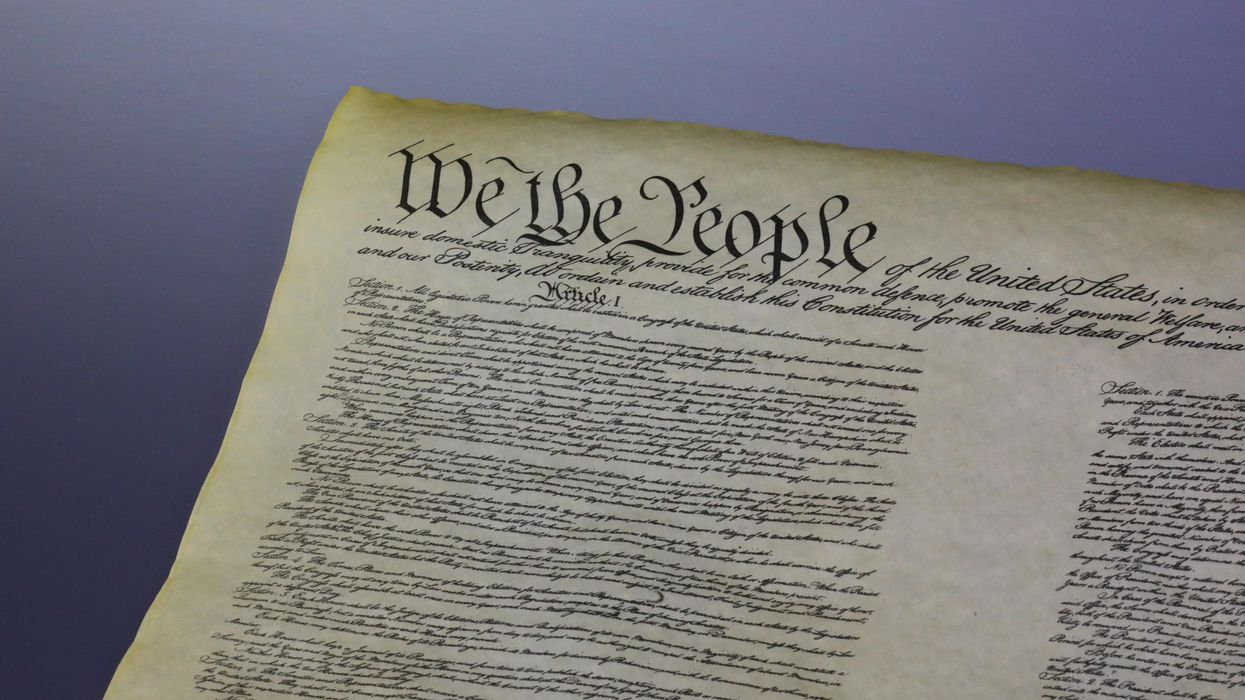Breslin is the Joseph C. Palamountain Jr. Chair of Political Science at Skidmore College and author of “A Constitution for the Living: Imagining How Five Generations of Americans Would Rewrite the Nation’s Fundamental Law.”
This is the latest in a series to assist American citizens on the bumpy road ahead this election year. By highlighting components, principles and stories of the Constitution, Breslin hopes to remind us that the American political experiment remains, in the words of Alexander Hamilton, the “most interesting in the world.”
It seems Florida Gov. Ron DeSantis has stepped away from the grueling rat race of a presidential campaign to pursue an even higher, and far more difficult, political prize: amending the U.S. Constitution.
I applaud the governor.
Last week, DeSantis announced that he was seeking fundamental constitutional reform in an effort to “hold the U.S. Congress accountable” and “protect the people of Florida from a reckless federal government.” He proposed four amendments: “a balanced federal budget, congressional term limits, equal laws for the public and members of Congress, and line-item veto authority for the President of the United States.” He is no doubt the most visible figure in the last several years to enter the debate about constitutional reform. And the most polarizing.
But he’s not wrong. The Constitution needs an overhaul. There, I said it. The greatest political charter in human history, the one that proved the model for all others and that has, for the most part, altered the entire trajectory of organized government around the world, is in desperate need of repair. The political document most revered, most venerated, and most esteemed by those at home (including me) and those abroad is, frankly, a bit outdated. We could use a few amendments, or better yet a whole new constitutional convention. It’s time. A return to Philadelphia to rewrite the nation’s fundamental law is long overdue.
What’s remarkable is that the Constitution has lasted as long as it has, and that it has been mostly effective — for a large slice of Americans at least — in safeguarding liberty. It has survived numerous wars, including a brutal Civil War where its very principles were questioned. The document has survived serious challenges to its authority by state legislators and governors (including DeSantis) bent on capturing power. It has survived alarming, and sometimes sickening, decisions by the courts — Dred Scott, Plessy v. Ferguson, Bowers v. Hardwick, Dobbs v. Jackson Women’s Health Organization. It has survived political scandals, malpractice, high crimes and misdemeanors, disloyalty, and treason. And it survived Jan. 6.
Those who wrote and ratified the Constitution were not sure it would, or even should, endure. James Madison was the strongest proponent of durable constitutions and even he worried that these “parchment barriers” were no match for a government that “draws all power into its impetuous vortex.” His lone experience with federal constitutions was the feeble Articles of Confederation. Lasting only eight years, the Articles proved irreparably broken. Just ask those who tried to vanquish Mr. Shays.
And then there were those who actively opposed abiding constitutions, most famously Thomas Jefferson. “The earth belongs in usufruct to the living,” Jefferson insisted. To be bound by the political visions and values of a prior generation is just another form of tyranny.
“Some men look at constitutions with sanctimonious reverence,” he claimed, “and deem them like the arc [sic] of the covenant, too sacred to be touched. They ascribe to the men of the preceding age a wisdom more than human, and suppose what they did to be beyond amendment.”
His solution was simple: “let us provide in our constitution for its revision at stated periods. ... Each generation is as independent as the one preceding. ... It has then a right to choose for itself the form of government it believes most promotive of its own happiness.”
Jefferson was never able to persuade his contemporaries of the merits of constitutional “revision at stated periods.” His argument was more convincing at the state level — 20 or so states now have built-in constitutional mechanisms for periodic revision. What is more, the remarkable work of Zachary Elkins, Tom Ginsburg and James Melton at the Comparative Constitutions Project indicates that the average lifespan of constitutions across the globe is a modest 17 years. Indeed, Jefferson’s constitutional influence has been greater abroad than it has been at home.
That said, a Jeffersonian-like call for amending the U.S. Constitution has reached a fever pitch. These appeals have happened in academic journals, to be sure. But they’re also surfacing in mainstream political outlets like The Atlantic, Vox, The New Republic and Democracy: A Journal of Ideas. Those outside the Beltway are increasingly questioning the merits of our current constitutional design. Notable academics have written books on the subject. The New York Times recently ran a series on the most influential reforms to our political system. The National Constitution Center in Philadelphia commissioned legal scholars from the libertarian, conservative and liberal persuasions to draft their own constitutions for the 21st century. The push for constitutional reform has even infused pop culture. Consider Chris Rock’s 2020 “Saturday Night Live” monologue in which he insisted we need to “renegotiate our relationship to our government” and come up with a “whole new [constitutional] system”:
Chris Rock monologue - SNLwww.youtube.com
The main question then is whether DeSantis will find any traction. Article V of the Constitution stipulates that revisions to the text can follow two procedural pathways: either two-thirds of both houses of Congress can propose amendments or two-thirds of the states can apply for a constitutional convention. The Floridian appears to be taking the latter route. Either way, he faces a steep and jagged uphill climb. Even if successful in convincing 33 more states to get on board with his plan, DeSantis would then have to induce three-quarters of the states to ratify any constitutional changes. That will not be simple.
But the conversation about constitutional reform needs to continue. As America approaches its semiquincentennial on July 4, 2026, and then, 11 years later, the 250th anniversary of its constitutional birth, we are right to wonder about particular provisions of our commanding charter. The woefully undemocratic Senate, the troubling Electoral College, the curiously short two-year House term, the archaic life tenure for federal court judges, the unenumerated right to privacy ... these are just a few of the Constitution’s many shortcomings.
There are more, of course, and the political environment is just going to get even more complex. We have to face the prospect that a Constitution for the 18th century may not be a Constitution for the 21st. In the end, Americans would be wise to heed that possibility.



















